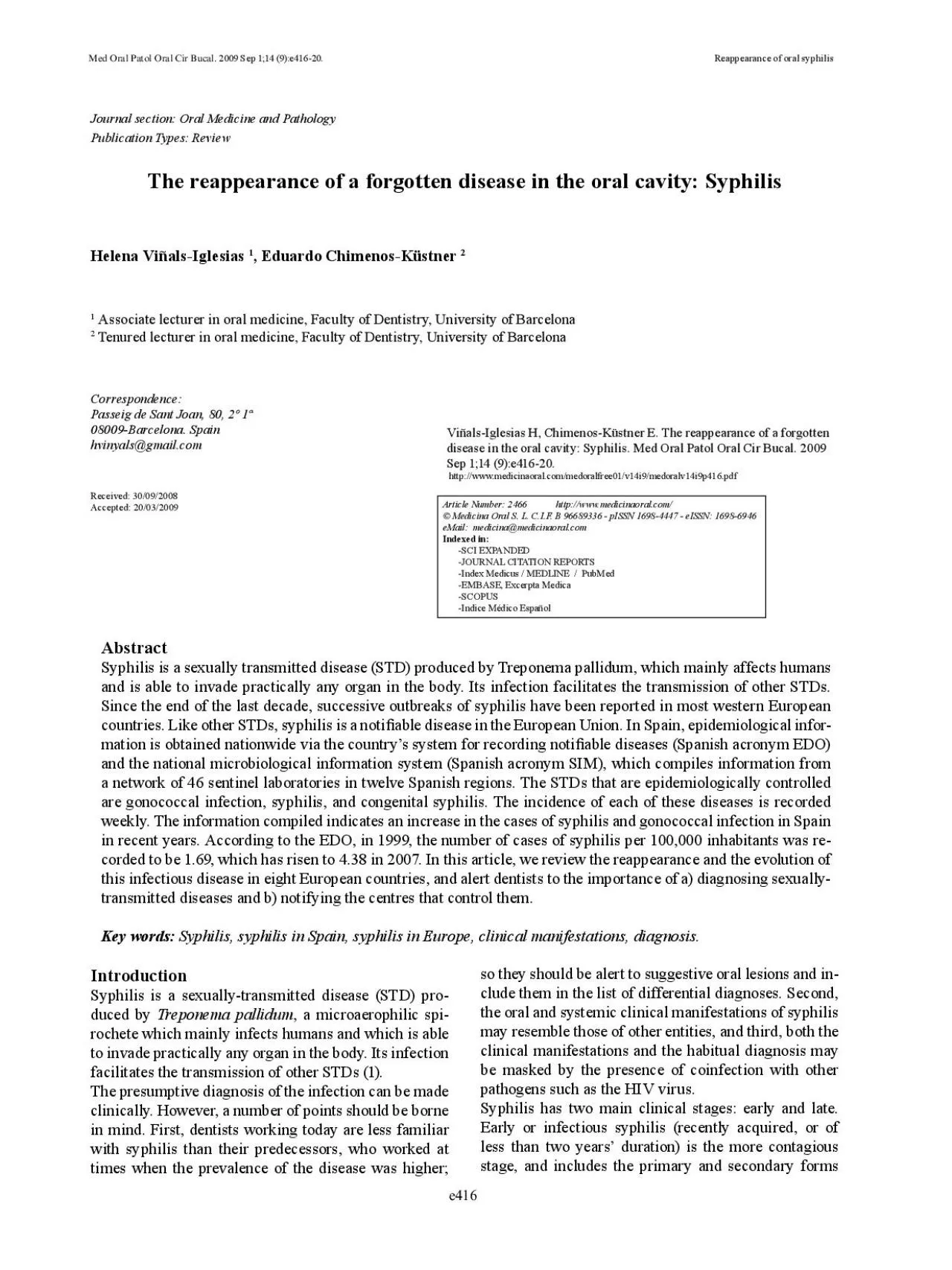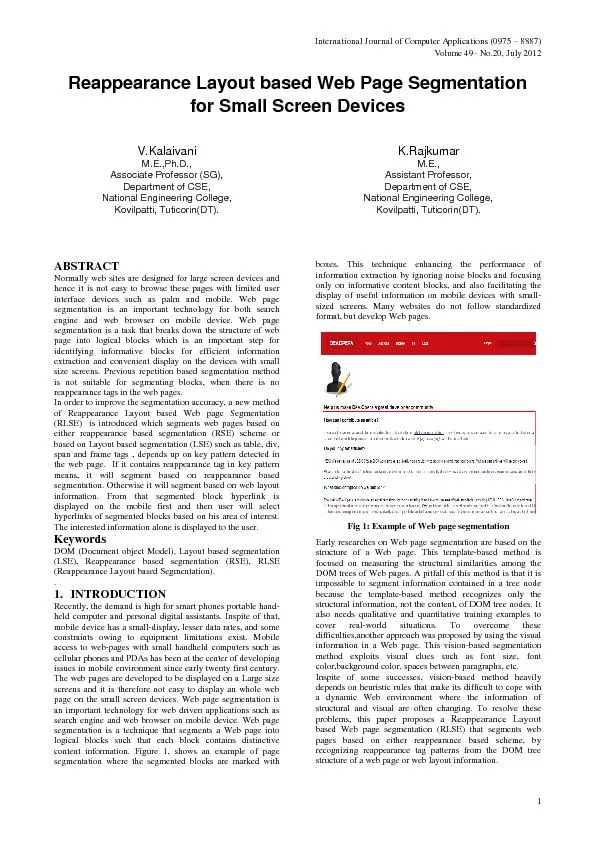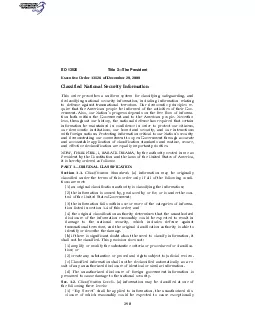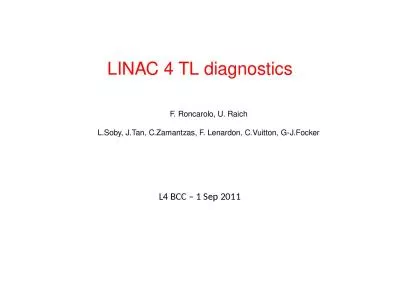PDF-Med Oral Patol Oral Cir Bucal Sep 114 9e41620 Reappearance of
Author : hailey | Published Date : 2022-09-22
Journal section Oral Medicine and PathologyPublication Types Review The reappearance of a forgotten disease in the oral cavity SyphilisHelena ViñalsIglesias Eduardo
Presentation Embed Code
Download Presentation
Download Presentation The PPT/PDF document "Med Oral Patol Oral Cir Bucal Sep 114 9e..." is the property of its rightful owner. Permission is granted to download and print the materials on this website for personal, non-commercial use only, and to display it on your personal computer provided you do not modify the materials and that you retain all copyright notices contained in the materials. By downloading content from our website, you accept the terms of this agreement.
Med Oral Patol Oral Cir Bucal Sep 114 9e41620 Reappearance of: Transcript
Download Rules Of Document
"Med Oral Patol Oral Cir Bucal Sep 114 9e41620 Reappearance of"The content belongs to its owner. You may download and print it for personal use, without modification, and keep all copyright notices. By downloading, you agree to these terms.
Related Documents














